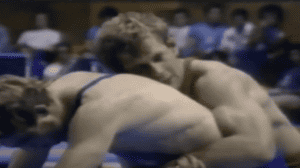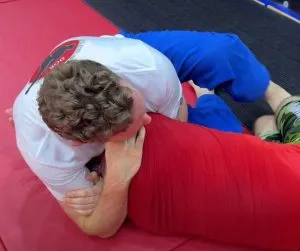The guard is the absolutely most important position in BJJ, it is what truly differentiates BJJ from other grappling arts and it gives a Jiujiteiro (BJJ practitioner) the ability to always create offensive opportunities out of what seems to be a defensive only position.
It is a grappling position that is very dangerous to get stuck in, with a wide variety of guard positions, sweeps and effective guard submissions to deal with.
There are many different guard positions and a large amount of guard passing and variations of passing that are available to deal with every BJJ guard. Learning the appropriate passes is pivotal to BJJ success and knowing which ones to start with as a white belt is important as building a strong guard passing base is pivotal to dominating the top game in Brazilian Jiu-Jitsu.
Basic Guard Passing Theory
When dealing with passing the guard, you must first identify what type of guard your opponent is using, what type of grips your opponent has on you, what type of grips you have on your opponent, your body position and the type of movement you can use against the pass.
Once you determine the above items (which should be done in seconds) you can now start attempting to pass the opponent’s guard.
Generally when speaking about white belt passing you will encounter 3 types of guards which are – closed guard, open guard and half guard. Yes, there are plenty of other guards that an opponent can play but at the beginner level these are the guards that you will encounter the most in terms of % they are used.
When encountering these guards as well as most guards, there are 5 types of movements within passes that can be used to pass the guard, these are:
You can pass under the legs, a good example would be the stack pass
You can pass through the legs, a knee slice is a great example of this type of pass
You can pass around the legs, the toreando is a perfect example of this type of pass
You can pass over the legs, generally most pressure passing is over the legs
You can pass by jumping over the legs, more advanced form of passing
All types of passes can generally be split into 2 types of passing which are pressure passing (staying close and tight to the opponent) or to movement passing (using speed, agility and movement to pass).
It is extremely important to also understand that there are also 2 more factors in passing that you must know which are the ability to either pass when on your knees or pass by standing up.
So as a beginner in BJJ, it is always important to understand your type of passing game and body type as you can concentrate on passes that you are more suitable for and thus have a higher percentage at passing the guard.
Guard Passes for Beginners
Let’s split the passes covered in this article into 3 different sections – closed guard, open guard and half guard.
Closed Guard
Closed guard can be a very tough and frustrating position to find yourself in due to the fact that the opponent’s legs are locked around you which enables them to shut down your movement. There is hope though as there are some great closed guard passes that are excellent for white belts to pass the guard with.
Double Under Guard Pass
Using your arms to grab under the opponents legs and hug them after breaking the guard, you are going to then stack their legs right over their head, thus gaining very good control of their hips to enable the pass.
Open Guard
Trying to pass the open guard can be very tiring as each time you go to pass, the opponent shrimps and resets their hips over and over again as well as foot placement on your body.
Toreando Guard Pass
This pass is sometimes known as the bullfighter’s pass as it resembles the movement of a bullfighter going to one side to avoid the bull’s rush. You basically grasp the opponent’s gi pants and step to the opposite side of where you are pushing the legs to. This pass is very smooth and effective and should you not be able to pass successfully, you will be in a standing position to try to pass again.
Half Guard
The half guard is one of the most common positions you will find yourself in as it is somewhat of a transition position as many times you will end up in half guard when trying to pass the guard.
Two very important tips when passing the half guard is to try to get the opponent’s back flat on the ground as this will drastically minimize the ability for the opponent to move their hips and regain a good position and always to to get the far side underhook (far side means the side opposite to the side your body is on) as one of the goals of your opponent to start sweeping you is to attain the underhook, so if you have the far side underhook, they will not have it and it will be much harder for them to sweep you from half guard.
Half Guard Pressure Pass
One of the highest percentage passes in IBJJF competitions, this pass works for the simple reason that by placing a lot of pressure through proper grips, hip position and weight distribution, you limit your opponent’s ability to move their hips effectively. This is the go to half guard pass for even the best of BJJ athletes and the good news is it works at the beginner level too.
In Conclusion
BJJ is highly dynamic, especially when it comes to the guard but if you can build a game to encounter the types of guards you will encounter and understand how to properly defeat the variety of guards you face, you will find a lot of success in your BJJ journey.




